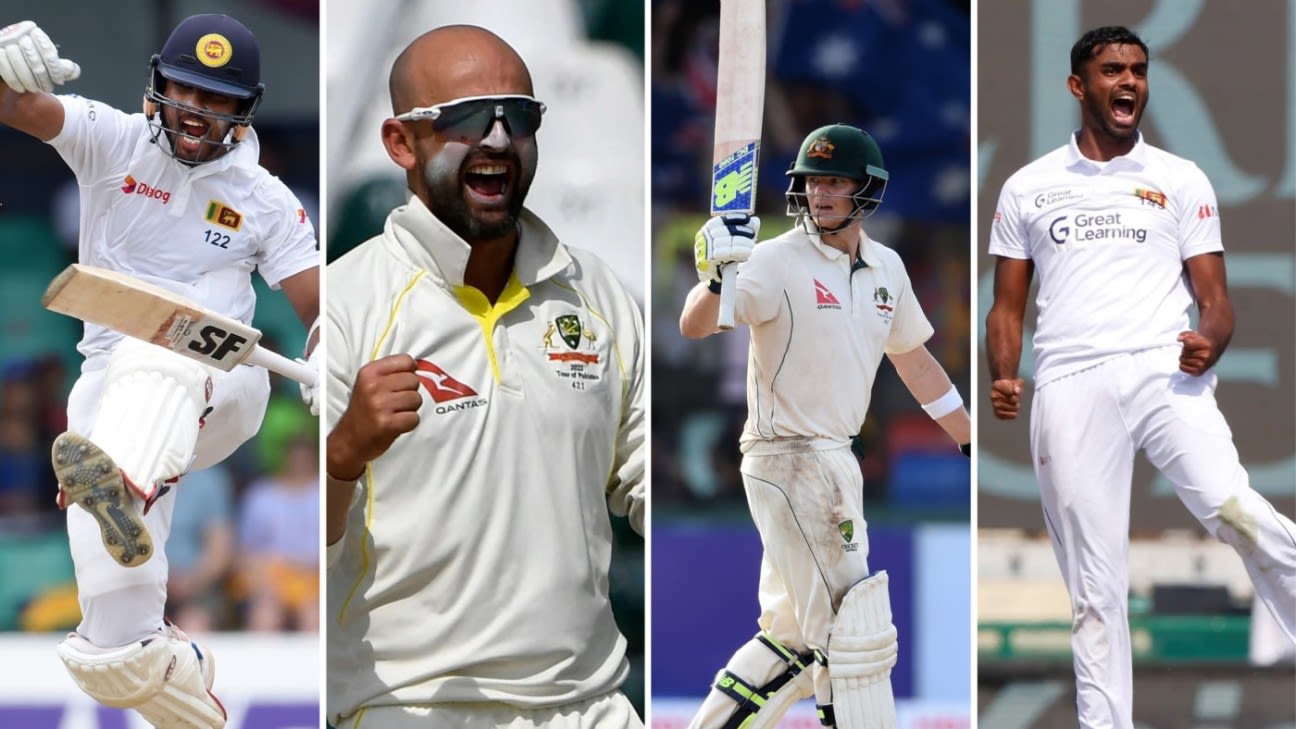Reverse swing proved Australia’s key weapon on the docile pitches in Pakistan, with Pat Cummins and Mitchell Starc able to do decisive damage in key moments in Karachi and Lahore to put Australia in the ascendency in both Tests. Starc took 10 wickets in the last Test Australia played in Galle in 2016 and will hope to have similar success if he is cleared to play after a lacerated finger kept him out of the last two T20Is and all five ODIs. Sri Lanka may consider the bold move of playing two quicks themselves in Galle given the success of Asitha Fernando and Kasun Rajitha on the recent tour of Bangladesh where both men did damage with the new and old ball. Fernando was able to ruffle the feathers of the Bangladesh batters with short balls and reverse swing. Australia’s top order are far more accomplished against pace, but Pakistan duo Naseem Shah and Shaheen Shah Afridi caused trouble for Australia’s batters in brief periods with the reverse swinging ball in Pakistan. Ultimately though, Australia will want it to reverse far more than Sri Lanka will.
Australia’s close catching in Pakistan cost them a Test win in Karachi with a countless number of chances going down at slip and around the bat. Steven Smith was a major culprit in the slips after making the odd choice of standing closer and in front of wicketkeeper Alex Carey at first slip for the majority of the tour. Australia have resolved their slip placement in the aftermath of the series, but they also need to improve their close catching off the spinners. They have already been practicing hard during the ODI series with Travis Head and Marnus Labuschagne doing extended close catching sessions at training with coach Andrew McDonald hitting catches using an oval-shaped Australian football to produce unpredictable angles. Australia have limited options for short leg and silly mid-off. If Head doesn’t play due to his hamstring injury, David Warner may need to step in. Sri Lanka’s catching is much improved in recent years. Dhananjaya de Silva has been excellent at slip to spin and showed his worth there in the ODI series. Pathum Nissanka will likely be under the lid in close and has also caught well recently. Chances could well come thick and fast if the ball spins square in Galle and the team that catches the best could well trigger a match-defining collapse.
Is it better to have scar tissue or none at all? Three of Australia’s top seven have experience in Sri Lanka. Usman Khawaja has played in four Tests across two tours in 2011 and 2016 but has a highest score of 26. Warner made one half-century in three Tests in 2016 but averaged 27.16 while Smith made a century on the 2016 tour and has an extraordinary record in India as well. Mitchell Marsh played three Tests in 2016 but is unlikely to play in this series while Glenn Maxwell, if called upon, has a Test hundred in India but has never played Test cricket in Sri Lanka. It is a new experience for Labuschagne, Head, Carey and Cameron Green. Green and Carey played well in Pakistan but Labuschagne and Head struggled, albeit Labuschagne made 90 on a Rawalpindi highway and he only fell to spin once on the tour. The memories might be better for Sri Lanka with Kusal Mendis, de Silva and Dinesh Chandimal all scoring centuries against Australia in the 2016 series against Starc, Nathan Lyon, and Josh Hazlewood who played all three Tests while Jon Holland played two. Angelo Mathews, coming off a sensational tour of Bangladesh, had a lean 2016 series but starred in 2011 scoring a century and two fifties against Lyon. Sri Lanka will be hoping for repeat performances from their batters while Australia will hope to learn from the mistakes of the past.
Rangana Herath’s were huge shoes to fill in the Sri Lanka side, but Lasith Embuldeniya has done a decent job. On Australia’s visit in 2016, Herath bagged 28 wickets at 12.75 and Sri Lanka will now be hoping that 25-year-old Embuldeniya can go some way towards having the same effect over these two matches in Galle. In five matches at the venue he has 32 wickets at 26.15 so the starting point is promising. That included a 10-wicket haul against England although it came in defeat and perhaps, significantly, the positive approach by Joe Root inparticular was a key factor in tempering the impact of his success. As with all Sri Lanka’s spinners, Embuldeniya is coming off the back of a poor tour of Bangladesh but if there was any ground to revive him it would probably be Galle.
Lyon or bust?
On the flip side, a lot of the focus will be on Lyon for Australia. He is on his third tour of Sri Lanka with the previous trips having provided contrasting experiences. It would be unfair to suggest that everything rests on his shoulders, but he will surely have to match, or better, what Sri Lanka’s spinners achieve for Australia to prevail. He starts this tour on the back of a series-clinching performance in Pakistan after a run of where Australia had been denied in a collection final-innings scenarios. He won’t be able to it alone, though, and the identity of his support will be fascinating. It would be quite a story if either Holland, who played the last of his four Tests in 2018, or the uncapped Matt Kuhnemann is alongside him while legspinner Mitchell Swepson remains in the frame.
With inputs from Andrew Fidel Fernando
